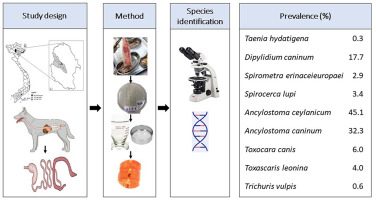
Top 7 dog breeds with poor health
Breeders and veterinarians cannot guarantee that a dog will be perfectly healthy all his life. But they can tell which breeds most often have problems.
Why did “problem” breeds appear?
Genetic diseases are closely related to inbreeding and linebreeding, that is, the crossing of relative dogs. In addition, these genes are fixed in the population, since selection is often not based on health reasons, but on the external signs of the beauty of the breed. There are more than 50 varieties of such “breakdowns” in the genes, and the diseases caused by them are many times more.
Health problems can also arise due to physiological features: the size of the torso, the structure of the limbs and internal organs, the strength of the bones, and much more. In this article, we will consider only the most common “pedigreed” diseases.
Please note that the examples below are not the weakest or worst dog breeds to avoid. Many congenital and acquired diseases can be corrected if the issue is studied in advance and diagnosed in time. Also, all dogs are individual, and not all representatives of a particular breed have the listed diseases. Before choosing a puppy, consult with veterinarians and breeders to learn about all the features of a particular breed.
Husky
Common problems: autoimmune disorders, dysfunction of the reproductive organs.
Malfunctions in the immune system of Siberian Huskies can lead to skin ulcers, hair loss and eye diseases: glaucoma and cataracts. Male dogs are also prone to cryptorchidism (failure of one or both testicles to descend into the scrotum), which reduces their reproductive function.
Prevention and treatment. Corticosteroids or immunosuppressants are used to combat autoimmune disorders. To start therapy in time, contact your veterinarian for any signs of inflammation of the eyes or skin of the husky.
For the treatment of cryptorchidism, after consultation with a veterinarian, in males up to 6 months old, massage courses and hormone therapy are used. At a later age, conservative treatment is ineffective, but surgery can help.
Bulldog
A common problem: difficult work of the respiratory system.
English and French Bulldogs, like other brachycephalic breeds, are prone to breathing problems. Their small nostrils, elongated soft palate, and narrow trachea result in brachycephalic syndrome. It can lead to lack of oxygen, fainting, cerebrovascular accident and suffocation.
Prevention and treatment. If the dog is constantly snorting and snoring, do not attribute this to the characteristics of the breed. Consult a veterinarian – a nostril resection or palate shortening may help the bulldog.
Pug
Common problems: loss of vision, difficulty in the respiratory system.
Pugs are also susceptible to brachycephalic syndrome, which is why they are known as “grunting” dogs. But the biggest danger for this breed is proptosis, or prolapse of the eyeball. It can occur from a strong blow or a sudden movement – and lead to complete loss of vision.
Prevention and treatment. The pet must be protected from aggression and rough games – both with people and with other dogs. A leash with a collar can create pressure on the throat and larynx, so it is better to replace it with a harness.
If the pug’s eye is already injured, do not try to fix the problem yourself. Moisten a gauze or bandage with saline solution, apply a bandage and go to the veterinarian immediately.
German Shepherd
Common problem: hip dysplasia.
Joint problems are common in many large breeds. When the head of the femur becomes deformed and comes out of the socket, the dog is in pain and unable to walk normally.
Prevention and treatment. After consultation with a veterinarian, the puppy should be protected from intense physical activity until 12 months of age, and throughout life, monitor the pet’s weight and maintain sufficient levels of calcium in its diet.
Beagle
Common problem: epilepsy.
Typically, a dog’s first seizure occurs between 6 months and 6 years of age. It can be provoked by trauma, stress and even malnutrition.
Prevention and treatment. The disease is incurable, but the number of attacks can be reduced. For this, a veterinarian may prescribe anticonvulsant drugs.
Boxer
Common problem: cancer.
Boxers are susceptible to malignant neoplasms, incl. neoplasms of the brain. Most often they develop lymphomas and mastocytomas.
Prevention and treatment. Feel your pet’s lymph nodes and torso regularly. If you notice bumps, lumps or other symptoms, contact your veterinarian.
Yorkshire Terrier
Common problem: portosystemic shunt.
Yorkies and other small dogs may suffer from abnormal vascular connections between the hepatic vein and the systemic circulation. If a portosystemic shunt has formed, blood from the gastrointestinal tract does not flow to the liver and does not get rid of toxins.
Prevention and treatment. Contact your veterinarian if your puppies are vomiting, convulsing, or have other symptoms. The portosystemic shunt can be removed – after the operation, the dog will lead a full life.
You should not refuse a touching pug or a devoted shepherd dog because of hypothetical diseases. The so-called “breeds with problems” are well studied, which means that together with a veterinarian you can develop a clear plan of action.





